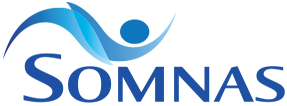Sleep Diagnostics
Diagnostic tools
Polysomnography, also called a sleep study, is a test used to diagnose sleep disorders. Polysomnography records your brain waves, the oxygen level in your blood, heart rate and breathing, as well as eye and leg movements during the study.
A CPAP titration study is a type of in-lab sleep study used to calibrate continuous positive airway pressure (CPAP) therapy. CPAP is a common treatment used to manage sleep-related breathing disorders including obstructive sleep apnea, central sleep apnea and hypoventilation and hypoxemia.
Home sleep apnea testing provides a board certified sleep medicine physician with the information he or she needs to diagnose obstructive sleep apnea. It allows you to sleep at home wearing equipment that collects information about how you breathe during sleep. You will usually set up the testing equipment yourself.
The multiple sleep latency test (MSLT) tests for excessive daytime sleepiness by measuring how quickly you fall asleep in a quiet environment during the day. Also known as a daytime nap study, the MSLT is the standard tool used to diagnose narcolepsy and idiopathic hypersomnia
The Maintenance of Wakefulness Test (MWT) is used to measure how alert you are during the day. It shows whether or not you are able to stay awake for a defined period of time. This is an indicator of how well you are able to function and remain alert in quiet times of inactivity.
Actigraphy is useful for assessing daytime sleepiness in place of a laboratory sleep latency test. It is used to clinically evaluate insomnia, circadian rhythm sleep disorders, excessive sleepiness and restless legs syndrome.
Overnight oximetry is a simple test that can easily be done at home. It provides basic information that may be useful in initially evaluating whether you have one of the more common sleep disorders, sleep apnea.

